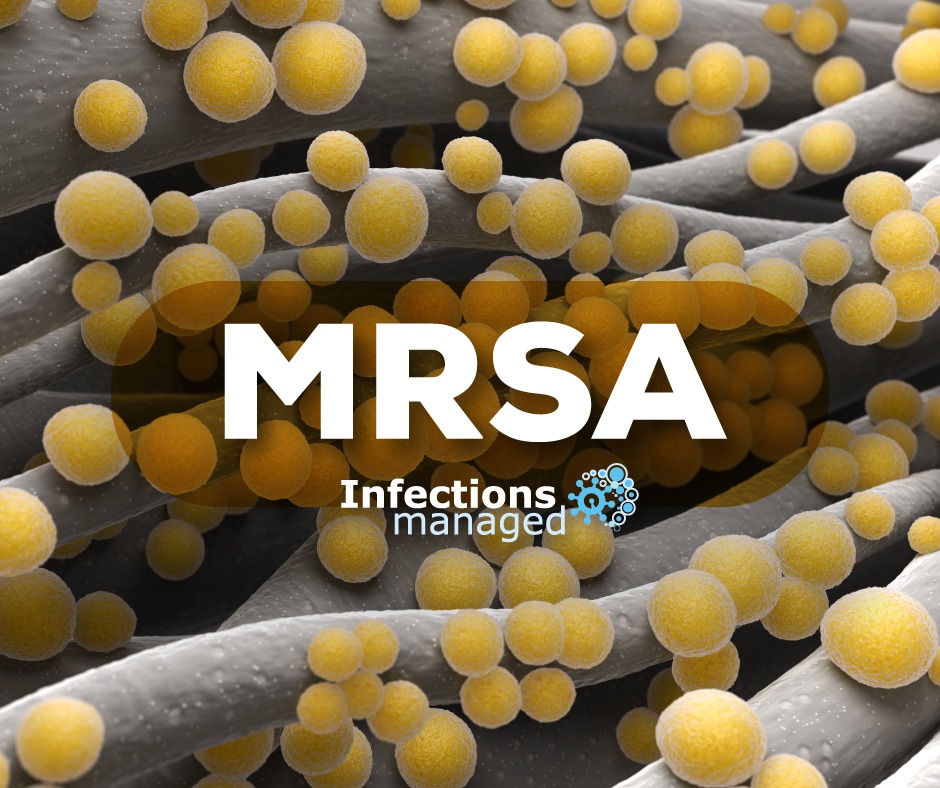MRSA stands for methicillin-resistant Staphylococcus aureus, a group of bacteria that have developed a strong resistance to multiple modern antibiotics. As a result, these bacteria cause dangerous infections that are extremely difficult to treat, if treatable at all.
MRSA is one of the deadliest ”superbugs” on the planet, so it’s essential to educate yourself on the matter. ”Know thy enemy,” as the old saying goes!
How can you get MRSA?
There are two types of MRSA infections:
- Hospital-associated MRSA infection (HA-MRSA)
- Community-associated MRSA infection (CA-MRSA)
As the name suggests, hospital-associated MRSA infections are primarily contracted in hospital environments. In this case, the MRSA bacteria live in these healthcare facilities and develop resistance to antibiotics by continually interacting with them. HA-MRSA is transmitted through contaminated catheters, medical equipment, and hands of the medical staff.
CA-MRSA infections are contracted outside of healthcare facilities by otherwise healthy people with no recent hospitalizations or invasive treatments. Usual ways of transmission include skin to skin contact and the sharing of household items.
Who is at risk of getting an MRSA infection?
Known risk factors for HA-MRSA include:
- Prolonged stay at a hospital
- Admission to an intensive care unit (ICU)
- Recent or prolonged antibiotic use
- Invasive procedures (surgeries, biopsies, etc.)
- Open wounds
- HIV / AIDS
- Long-term venous catheters
- Long-term urinary catheters
- Hemodialysis
On the other hand, here are the most common risk factors for CA-MRSA infections :
- Close contact with someone who has an MRSA infection
- Men who have sex with men
- Athletes engaged in contact sports
- Use of injection drugs
- Recent use of antibiotics
Other populations who have an increased risk of getting an MRSA infection:
- People with diabetes
- Elderly people
- Veterinarians
- People who live in unsanitary or confined spaces with other people (military recruits, prison inmates, homeless shelters)
Keep in mind that these are just risk factors that somewhat increase one’s probability of getting an MRSA infection, but even if you don’t have anything from these two lists it doesn’t mean you can’t get MRSA. Stay alert, pay close attention to your symptoms, and don’t hesitate to visit an experienced infectious disease doctor if you suspect you may have MRSA.
How are MRSA infections spread?
According to the Minnesota Department of Health, MRSA is usually spread from one person to another by contaminated hands. Healthy skin and undamaged mucous membranes are usually impenetrable to MRSA, but when these structures are breached (as during surgeries, injuries, injections, etc.), the bacteria can reach the underlying tissues and colonize them.
Another way of contracting MRSA is by contacting with items (household or healthcare-related) that were contaminated by a person with MRSA. Some examples include:
- Wound dressings
- Towels
- Clothes
- Door handles, taps
- Disposable razors
What are the common signs and symptoms of MRSA infection?
Although MRSA infections can be localized in any organ or system, about 75% of all CA-MRSA infections are limited to the skin and soft tissues.
Such infections may start as painful red bumps on the skin, sometimes resembling insect bites and often accompanied by fever, shivers, and fatigue. Throughout the following few days, the bumps become larger, more painful, and fill with pus.
Although the description above sounds alarming, MRSA infections that are limited to the skin or underlying fatty tissue can be treated effectively due to the limited nature of the damage. However, it’s important to see a doctor as soon as possible to prevent the spreading of the infection to other systems and organs.
Other localizations of the MRSA infection show their own symptoms, but they have one thing in common: the disease doesn’t respond well to usual antibiotics. In this case, the diagnosis of MRSA should be confirmed, and special treatment should be started urgently.
Conclusion
MRSA infection is one of the most dangerous infections in existence, but it’s still a treatable one. If you suspect that you or a loved one may be dealing with MRSA, remember that every day counts and the diagnosis should be confirmed as soon as possible.
Make an appointment with an infectious disease specialist to discuss the matter in more detail!

